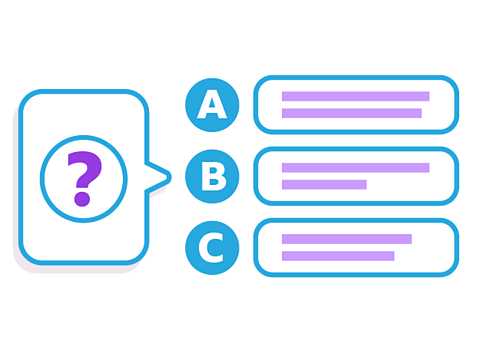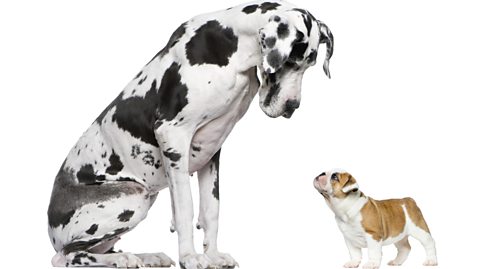Key points about the position of adjectives in Spanish

Most adjectiveUsed to describe nouns and must agree with the nouns they are describing. go after the nounThe name of a thing such as an object, a place or a person. Nouns are often described as naming words. they describe in Spanish.
Some adjectives go before the noun they are describing but they still have to agreeIn Spanish, an adjective must agree with the noun or nouns they are describing, which means that they have to show if they are masculine or feminine and singular or plural to match the noun. with the nounās genderNouns in Spanish are classified into two groups: masculine or feminine. Each noun therefore has a gender..
Some adjectives are shortened when they come in front of a masculineIn Spanish, all nouns have a gender, either masculine or feminine. singularRefers to only one object or person. noun.
The meanings of a few adjectives change according to whether they are before the noun or after the noun in the sentence.
Position of adjectives after the noun
In Spanish, unlike in English, most adjectives come after the noun they are describing.
For example:
Sorry, something went wrongCheck your connection, refresh the page and try again. - a white house
The adjective - blanca - comes after the noun - casa.
Sorry, something went wrongCheck your connection, refresh the page and try again. - black hair
The adjective - negro - comes after the noun - pelo.
Position of adjectives in front of the noun
Some adjectives can go before the noun they are describing but they still have to agree.
For example:
Sorry, something went wrongCheck your connection, refresh the page and try again. - the second film
Sorry, something went wrongCheck your connection, refresh the page and try again. - the first days
Common adjectives that usually come before the noun include:
Sorry, something went wrongCheck your connection, refresh the page and try again. - a little
Sorry, something went wrongCheck your connection, refresh the page and try again. - a lot
Sorry, something went wrongCheck your connection, refresh the page and try again. - next
Sorry, something went wrongCheck your connection, refresh the page and try again. - last
Sorry, something went wrongCheck your connection, refresh the page and try again. - some, any
Sorry, something went wrongCheck your connection, refresh the page and try again. - none
Sorry, something went wrongCheck your connection, refresh the page and try again. - first
Sorry, something went wrongCheck your connection, refresh the page and try again. - second
Sorry, something went wrongCheck your connection, refresh the page and try again. - third
The shortening of some adjectives before singular masculine nouns
Some adjectives are shortened when they come in front of a masculine singular noun.
| Adjective | Translation | Before a masc sing noun | Example | Translation |
|---|---|---|---|---|
| Sorry, something went wrongCheck your connection, refresh the page and try again. | good | Sorry, something went wrongCheck your connection, refresh the page and try again. | Es un buen colegio | A good school |
| Sorry, something went wrongCheck your connection, refresh the page and try again. | bad | Sorry, something went wrongCheck your connection, refresh the page and try again. | Hace mal tiempo | Itās bad weather |
| Sorry, something went wrongCheck your connection, refresh the page and try again. | first | Sorry, something went wrongCheck your connection, refresh the page and try again. | Es el primer dĆa | It's the first day |
| Sorry, something went wrongCheck your connection, refresh the page and try again. | third | Sorry, something went wrongCheck your connection, refresh the page and try again. | Es mi tercer examen del dĆa | It's my third exam of the day |
| Sorry, something went wrongCheck your connection, refresh the page and try again. | some, any | Sorry, something went wrongCheck your connection, refresh the page and try again. | Prefiero hacer ²¹±ō²µĆŗ²Ō deporte | I prefer doing some sport |
| Sorry, something went wrongCheck your connection, refresh the page and try again. | no, none | Sorry, something went wrongCheck your connection, refresh the page and try again. | No tengo ²Ō¾±²Ō²µĆŗ²Ō queso | I have no cheese |

Remember
Remember to add an accent on ²¹±ō²µĆŗ²Ō and ²Ō¾±²Ō²µĆŗ²Ō.
Position of adjectives - Mini quiz

Fill in the blank with the correct form of the adjective:
No tengo ______ plan.
I havenāt got any plans.
No tengo ²Ō¾±²Ō²µĆŗ²Ō plan.
Plan is a masculine singular noun and ninguno should be shortened to ²Ō¾±²Ō²µĆŗ²Ō.
How adjectives can change their meaning
The meaning of some adjectives changes depending on whether they are before the noun or after the noun in the sentence.
Four common adjectives that follow this pattern are:
Sorry, something went wrongCheck your connection, refresh the page and try again.
Sorry, something went wrongCheck your connection, refresh the page and try again.
Sorry, something went wrongCheck your connection, refresh the page and try again.
Sorry, something went wrongCheck your connection, refresh the page and try again.
The different meanings of 'grande'
The adjective Sorry, something went wrongCheck your connection, refresh the page and try again. means 'big' when it comes after the noun and 'great' when it comes before a noun.
Note that grande is shortened before both masculineIn Spanish, all nouns have a gender, either masculine or feminine. and feminineIn Spanish, all nouns have a gender and are either masculine or feminine. nouns.
For example:
Sorry, something went wrongCheck your connection, refresh the page and try again. - a great school
Sorry, something went wrongCheck your connection, refresh the page and try again. - a big school
Sorry, something went wrongCheck your connection, refresh the page and try again. - a great woman
Sorry, something went wrongCheck your connection, refresh the page and try again. - a big woman
The different meanings of 'viejo'
The adjective Sorry, something went wrongCheck your connection, refresh the page and try again. means āoldā, āformerā or ālongstandingā before the noun and āoldā or āelderlyā after the noun.
For example:
El viejo coche - The old car
La mujer vieja - The elderly woman
The different meanings of 'nuevo'
The adjective Sorry, something went wrongCheck your connection, refresh the page and try again. means ānewā or āanotherā before the noun and ānewā or ānewly madeā after the noun.
For example:
Tengo un nuevo coche. - I have a new car (meaning new to me).
Tengo un coche nuevo. - I have a brand new car.
The different meanings of 'antiguo'
The adjective Sorry, something went wrongCheck your connection, refresh the page and try again. means āformerā before the noun and āoldā or āancientā after the noun.
For example:
Mi antiguo profesor de espaƱol fue major. - My former Spanish teacher was better.
El castillo antiguo - The ancient castle
Quiz - Position of adjectives
Practise what you've learned about positioning of adjectives with this quiz.
Now you have learned about the position of adjectives in Spanish why not explore possessive adjectives?
More on Adjectives and adverbs
Find out more by working through a topic
- count3 of 8

- count4 of 8

- count5 of 8

- count6 of 8
